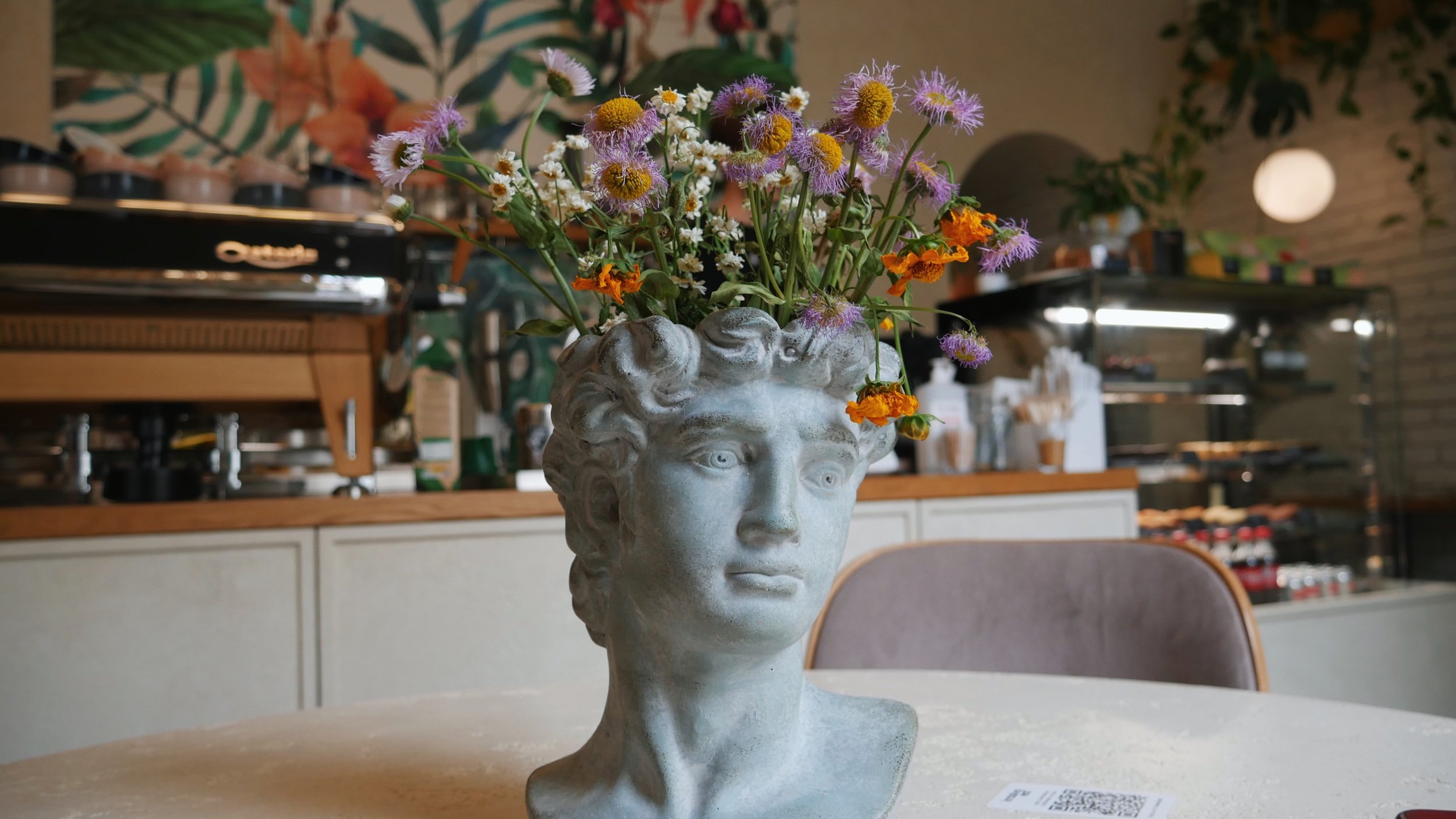Above the Clouds of Pompeii
On an overcast June Tuesday, we visited Kyiv’s city landscape.
After I had taught our morning English lesson, we decided to drive from Boryspil to Kyiv.. a short twenty-minute drive by car.
My sister had researched a café by the name of “Krasivo Est” (when translated, it means “to eat beautifully”). She wanted to show my father and me the display of destroyed Russian war machinery and artillery outside St. Sophia’s Cathedral.
“Bravery is a Ukrainian brand”
“Our freedom is granted by our Creator”
My father parked our car, and we set off on foot, stopping occasionally to view art and museums from the street.
Krasivo Est is on a slight hill overlooking a busy intersection in front of the century-old Bessarabian Market (a 24/7 indoor marketplace).
The treats we decided to pick up ranged from iced and hot lattes, coffee tonic, burgers (brought out with gloves), and an Eastern Slavic dish named syrnyky (quark pancakes): all of which were delectable ;).
The wonderful delicacies and company were further heightened by the rolling of thunder and rain outside the large windows… the playlist’s composition was also spectacular!
We decided to spend some time working on timetables and projects before setting off to St. Sophia’s Cathedral… specifically to the exhibition in front of it.
Several people were gathered around the destroyed tanks, peering through dematerialized windows and under decimated casements.
Some rockets were also strewn around the display, in the same ill state as the tanks and machines.
Groups of children and youth were climbing the machinery while adults stood and read the signs at each structure.
A destroyed green car was positioned amidst the artillery, its windows shattered with the glass strewn across blood-splattered seats.
The front of the vehicle had four sheets of paper roughly taped to it spelling out the four-lettered word “ДЕТИ” (KIDS), and the abandoned car seat in the back further stressed what circumstances surrounded this wreckage.
The car was previously owned by a local Ukrainian family who had decided to gather and leave the territory during the Russian occupation. Their car held every member of the family, including two children. They marked their vehicle with the words “KIDS” to cease any possible fire they could encounter on their way out of the region.
Russian soldiers opened direct fire on the family during their evacuation. The family was massacred, including both children.
The wrecked foreground amid the background of the cathedral cast a sense of jarring reality onto the civilians (and soldiers) that passed by the display.
The city and roads around the square functioned at a capacity as average as they could get while at war. Above such a range of motion, it was clear that despite the onslaught cast upon the nation, its people were neither dismissive of their past compatriots’ sacrifice nor inactive in further good deeds.
One can only continue living rightfully to demonstrate opposition against an unjust demise. People are not animals to be slaughtered or tyrannized; they will continue their lives with everyday reverence for those lives which were robbed from doing so.










